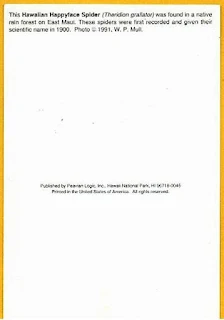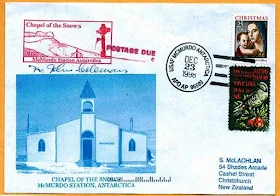Thank you, my friend Fi from Jo'burg [Johannesburg, RSA], for creating this UNICATE (only 1 in the world in this configuration, AFAIK= "as far as I know") maxicard specially for me!
You have chosen the perfect position of the postmark on the postcard, when you handcancelled "under the supervision"/ "in front of" the cooperating postal clerk from the village of Krugersdorp. :)
Isn't it cool when the postmark is really visible?
WWF maxicards about Uganda
"The African Elephant is the largest living terrestrial animal, normally reaching 6 to 7.3 metres (19.7 to 24.0 ft) in length and 3 to 3.5 metres (9.8 to 11.5 ft) in height at the head, and weighing between 6,000 to 9,000 kg (13,000 to 20,000 lb).
The largest on record, shot in Angola in 1965, was a bull weighing 12,274 kg (27,060 lb) and standing 4.2 metres (13.8 ft) high, the body of which is now mounted in the rotunda of the National Museum of Natural History in Washington, D.C.. (The museum's website states that the specimen weighs only 8 tons[4].) The Bush Elephant normally moves at a rate of 6 km/h (4 mph), but it can reach a top speed of 40 km/h (25 mph) when scared or upset."
Dentition (or lack of proper dentition) may be hazardous to you:
The last set of [molar] teeth last approximately until the age of 65–70.
"Not much later, the animal dies of starvation from not being able to feed correctly. There are known cases of over 80 year old specimens in captivity."
A male elephant is called a BULL elephant. And you thought that bullshit is always a bad thing ("that's bullshit" = "that's bad/ false/ useless!" - right?)
"These animals typically ingest an average of 225 kg of vegetable matter daily, which is defecated without being fully digested. That, combined with the long distances that they can cover daily in search of more food, contributes notably to the dispersion of many plant seeds that germinate in the middle of a nutrient-filled feces mound."
"Elephants also drink great quantities of water, over 190 liters per day."
You can talk all you want, but can YOU emit infrasounds?
"Mating happens when the female becomes receptive [MY NOTE: raping is not an option here], an event that can occur anytime during the year. When she is ready, she starts emitting infrasounds that attract the males, sometimes from kilometers away. The adult males start arriving at the herd during the following days and begin fighting, causing some injuries and even broken tusks. The female shows her acceptance of the victor by rubbing her body against his. They mate, and then both go their own way. After 22 months of gestation (the longest among mammals), the female gives birth to a single 90 cm high calf which weighs more than 100 kg. The baby feeds on the mothers milk until the age of 5, but also eats solid food from as early as 6 months old. Just a few days after birth, the calf can follow the herd by foot."
If you MUSTH know:
"Although it has often been speculated by zoo visitors[1] that musth is linked to rut, it is unlikely there is a biological connection because the female elephant's estrus cycle is not seasonally-linked, whereas musth most often takes place in winter. Furthermore, bulls in musth have often been known to attack female elephants, regardless of whether or not the females are in heat. There has been speculation that there may be a connection between musth and dominance behaviour.
Often, elephants in musth discharge a thick tar-like secretion called
temporin from the
temporal ducts on the sides of the head. Temporin remains largely uncharacterised, due to the difficulties of collecting samples for analysis; however, secretions and
urine collected from zoo elephants have been shown to contain elevated levels of various highly odorous
ketones and
aldehydes. The elephant's aggression may be partially caused by a reaction to the temporin, which naturally trickles down into the elephant's mouth. Another contributing factor may be the accompanying swelling of the
temporal glands; this presses on the elephant's
eyes and causes acute pain comparable to severe
root abscess toothache. Elephants sometimes try to counteract this pain by digging their
tusks into the ground.

An African elephant chases a giraffe during musth.
Musth is linked to sexual arousal or establishing dominance, but this relationship is far from clear. Cases of elephants goring and killing
rhinoceroses in
national parks in Africa have been documented and attributed to musth in young male elephants, especially those growing in the absence of older males. Studies show that reintroducing older males into the elephant population of the area seems to prevent younger males from entering musth, and therefore, stop this aggressive behavior.
[2][3]"






